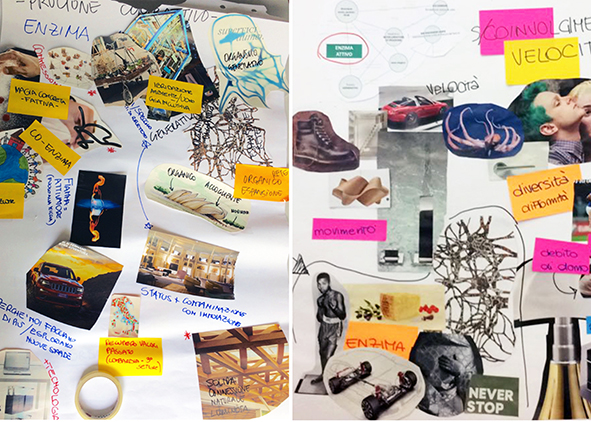Co-Design for Rebranding an Italian Foundation
DOI:
https://doi.org/10.19229/2464-9309/5182019Keywords:
rebranding, brand perception, co-design, philanthropic organization, organizational changeAbstract
This paper is based on research conducted by Creative Industries Lab of Politecnico di Milano for creating the new brand image and communication strategy for Fondazione Cariplo. A Co-Design approach has involved both internal and external stakeholders in visually defining a shared future identity for rebranding this significant foundation to the public. The research results have revealed that the co-creation process has not only generated the expected objectives, but also raised a cultural change towards innovation inside the organization itself. Therefore, this experience has opened a new research realm for applying design methods and tools in organizations.
Downloads
Article Metrics Graph
References
Bassani, M. and Sbalchiero, S. (2002), Brand design – Costruire la personalità di marca vincente, vol. 2, Alinea Editrice, Firenze.
Beaudry, J. (2015), “Design tools for social engagement in organizations”, in Od Practitioner, vol. 47, issue 3, pp. 15-20.
Buchanan, R. (2004), “Interaction pathways in organizational life”, in Boland, R. J. and Collopy, F. (eds), Managing as Designing, Stanford University Press, Stanford (CA), pp. 54-63.
Buchanan, R. (1992), “Wicked problems in design thinking”, in Design Issues, vol. 8, issue 2, pp. 5-21.
Cauro, F., Fois, L., Legramandi, E., Melazzini, M., Pei, X., Vignati, A. and Zurlo, F. (2016), “Design and Gamification for Reshaping Relations and Services in Social Cooperatives”, in Inflection Point – Design Research Meets Design Practice. The 20th dmi – Academic Design Management Conference Proceedings, 28-29 July, 2016, Massachusetts College of Art and Design, Boston, pp. 1934-1953.
Davies, G., Chun, R., Vinhas da Silva, R. and Roper, S. (2004), “A corporate character scale to assess employee and customer views of organization reputation”, in Corporate Reputation Review, vol. 7, n. 2, pp. 125-146.
Kawakita, J. (1975), The KJ method – a scientific approach to problem solving, Technical report, Kawakita Research Institute, Tokyo.
Kylander, N. and Stone, C. (2012), “The role of brand in the nonprofit sector”, in Stanford Social Innovation Review, vol. 10, issue 2, pp. 35-41.
Lave, J. and Wenger, E. (1991), Situated learning: Legitimate peripheral participation, Cambridge University Press, Cambridge (UK).
Melewar, T. C. and Karaosmanoglu, E. (2006), “Seven dimensions of corporate identity – a categorisation from the practitioners’ perspectives”, in European Journal of Marketing, vol. 40, n 7-8, pp. 846-869.
Okonkwo, U. (2016), Luxury fashion branding: trends, tactics, techniques, Springer, New York.
Patrício, R., Moreira, A. C. and Zurlo, F. (2018), “Gamification approaches to the early stage of innovation”, in Creativity and Innovation Management, vol. 27, issue 4, pp. 499-511.
Rousseau, D. (1995), Psychological contracts in organizations – Understanding written and unwritten agreements, Sage Publications, USA.
Sanders, E. and Stappers, P. (2008), “Co-creation and the new landscapes of design”, in CoDesign, vol. 4, issue 1, pp. 5-18.
Schmitt, B. (1995), “Language and visual imagery: issues of corporate identity in East Asia”, in Columbia Journal of World Business, vol. 30, n. 4, pp. 8-36.
Schmitt, B., Simonson, A. and Marcus, J. (1995), “Managing corporate image and identity”, in Long Range Planning, vol. 28, n. 5, pp. 82-92.
Simanis, E. and Hart, S. (2011), “Innovation from the inside out”, in MIT Sloan Management Review | Top 10 Lessons on the New Business of Innovation, Winter 2011, pp. 9-18. [Online] Available at: www.academia.edu/24853103/Innovation_From_the_Inside_Out [Accessed 19 December 2017].
Zurlo, F. (2018), “Produzioni Creative Driven”, in Io sono Cultura – 2018 | L’Italia della qualità e della bellezza sfida la crisi, Quaderni di Symbola, pp. 197-203.

Downloads
Published
How to Cite
Issue
Section
License
This Journal is published under Creative Commons Attribution Licence 4.0 (CC-BY).
License scheme | Legal code
This License allows anyone to:
Share: copy and redistribute the material in any medium or format.
Adapt: remix, transform, and build upon the material for any purpose, even commercially.
Under the following terms
Attribution: Users must give appropriate credit, provide a link to the license, and indicate if changes were made; users may do so in any reasonable manner, but not in any way that suggests the licensor endorses them or their use.
No additional restrictions: Users may not apply legal terms or technological measures that legally restrict others from doing anything the license permits.
Notices
Users do not have to comply with the license for elements of the material in the public domain or where your use is permitted by an applicable exception or limitation.
No warranties are given. The license may not give users all of the permissions necessary for their intended use. For example, other rights such as publicity, privacy, or moral rights may limit how you use the material.


















































































